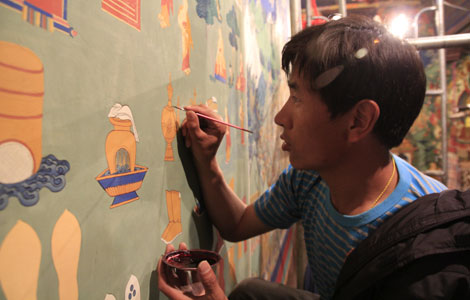Arrival of China tigers put on hold
Updated: 2013-07-27 08:48
By Yang Yao (China Daily)
|
||||||||
In the 1950s, only six South China tigers were seen in the wild, said Yan, the wildlife official.
"For the South China tiger, the only ones available for rewilding and reintroduction into the wild are those from the small captive population in Chinese zoos, which are direct descendants of the six wild tigers caught in the 1950s," he said.
Hunting skills
Quan Li, the founder of Save China's Tigers, said that in the wild, tiger cubs acquire and develop hunting and survival skills from their mothers. This may occur over a period of up to two and a half years.
"Tigers bred in captivity lack these essential hunting and survival skills," Quan said.
She added that although some tigers may be able to kill prey instinctively, they may not possess the required skills, patience and development for survival in the wild.
"Therefore, it is essential that tigers develop adequate hunting skills before they are reintroduced as free-ranging predators," said Quan.
For this reason, she and her team decided to invest their resources in securing an area in South Africa, which has affordable land, abundant prey and rich experience in wildlife expertise.
After the first two Chinese tiger cubs arrived in South Africa in September 2003, they underwent a 30-day quarantine period at the National Zoological Gardens in Pretoria before being relocated to the Laohu Valley Reserve for training for the wild.
A second pair of tiger cubs arrived from China in November 2004.
Both sets of cubs underwent rewilding training, while a fifth animal was sent in April 2007 at the age of four and a half specifically for breeding purposes. It replaced a male tiger that died in 2005 from pneumonia and heart failure.
The rewilding methods used there were originated and developed by Gus Van Dyk, former carnivore manager at Pilanesberg National Park in South Africa.

 Bolt wins 100m at London's Olympic Stadium
Bolt wins 100m at London's Olympic Stadium
 19 industries to shed capacity
19 industries to shed capacity
 Choir sings its way into Chinese hearts
Choir sings its way into Chinese hearts
 Hot times for travel agents
Hot times for travel agents
 Nursing home blaze kills 11 residents
Nursing home blaze kills 11 residents
 Wuhan a prime spot for international rowing hub
Wuhan a prime spot for international rowing hub
 LeBron frenzy grips Guangzhou
LeBron frenzy grips Guangzhou
 Police to question driver for Spanish train crash
Police to question driver for Spanish train crash
Most Viewed
Editor's Picks

|

|

|

|

|

|
Today's Top News
CIC gets 10.6% yield for overseas assets
Arrival of China tigers put on hold
Deadly NE China fire an act of arson: police
Chinese developer buys LA site for $1b project
Snowden faces another 6 months in limbo: official
Sovereign fund sees 10.6% return
Hot times for travel agents
19 industries to shed capacity
US Weekly

|

|








